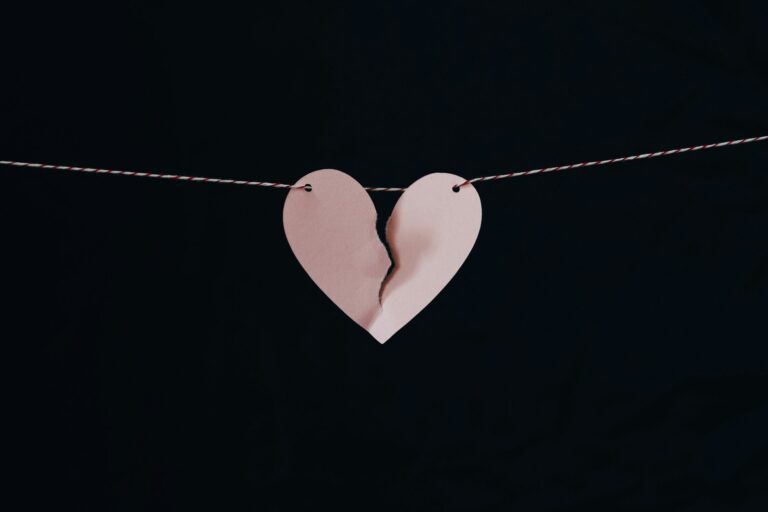Romantic relationships can be a source of deep connection but also profound pain, especially when one partner suddenly withdraws without explanation. The phenomenon known as the “avoidant discard” is gaining attention among those seeking to understand the dynamics of attachment, emotional availability, and the heartbreaking experience of being abruptly left by an avoidant partner. In this comprehensive guide, we explore the avoidant discard: what it is, why it happens, and how to heal and grow in its aftermath.
What Is the Avoidant Discard?
The term “avoidant discard” refers to a relationship dynamic in which one partner—typically someone with avoidant attachment tendencies—ends the relationship abruptly or distances themselves emotionally with little or no communication. This can leave the other partner feeling shocked, confused, and abandoned, struggling to make sense of what went wrong.
Attachment Theory and Avoidance
Attachment theory, first developed by John Bowlby and Mary Ainsworth, identifies different styles of relating to others based on early childhood experiences. An avoidant attachment style is characterized by difficulty with emotional intimacy, discomfort with closeness, and a strong desire for independence.
- Dismissive-avoidant: Individuals value independence and self-reliance, often downplaying the importance of relationships.
- Fearful-avoidant: Individuals desire closeness but fear intimacy, leading to push-pull behaviors and unpredictable distancing.
In relationships, avoidantly attached individuals may struggle to express vulnerability or commitment, making them more likely to pull away or “discard” a partner—especially when feeling overwhelmed by closeness or emotional demands.
Signs You May Experience an Avoidant Discard
The avoidant discard rarely happens without warning, though the signs may be subtle and easy to overlook. Understanding the typical behaviors of avoidant partners can help you recognize these dynamics early:
- Sudden or unexplained withdrawal of affection
- Less communication or increasingly superficial conversations
- Reluctance to define the relationship or discuss the future
- Increased focus on independence and personal space
- Defensive or dismissive reactions to emotional vulnerability
- “Ghosting” or disappearing without closure
These signs may intensify during periods of increased intimacy or when the avoidant partner feels pressure to commit.
Why Do Avoidant Partners Discard?
To better cope with the impact of an avoidant discard, it helps to understand the motivations behind avoidant behavior. While every individual is unique, there are several common reasons why someone with an avoidant attachment style may choose to withdraw or end a relationship.
1. Fear of Intimacy
Closer emotional bonds can trigger deep-seated fears of engulfment, loss of independence, or vulnerability for avoidant individuals. When intimacy reaches a certain level, their instinct is self-protection—leading to emotional or physical withdrawal.
2. Inability to Process Emotions
Avoidant partners often struggle to recognize or articulate their own emotional states. When emotions become overwhelming, the easiest solution may be to shut down or escape the situation rather than communicate openly.
3. Unresolved Past Trauma
Some avoidant tendencies stem from childhood experiences of unreliable caregiving, abandonment, or betrayal. These memories create unconscious patterns of distancing to avoid being hurt again.
4. Idealization and Devaluation
It’s common in avoidant relationships for the avoidant partner to initially idealize the other person, only to later devalue them when vulnerabilities or flaws appear. This shift may precipitate an abrupt discard when their partner is no longer “perfect.”
5. Fear of Conflict
Instead of facing difficult conversations, avoidant individuals may prefer to withdraw silently, hoping the problem (or the relationship) will resolve itself. This avoidance of confrontation often leads to one-sided endings.
The Emotional Impact of the Avoidant Discard
Experiencing an avoidant discard can be deeply destabilizing. Because avoidant partners rarely provide closure or honest explanations, those left behind often grapple with self-doubt and confusion. Common emotional effects include:
- Shock and disbelief: The sudden nature can make the loss feel unreal.
- Self-blame: Partners may obsessively analyze their own behavior, believing they caused the withdrawal.
- Anxiety and attachment panic: Those with anxious or secure attachment may feel abandoned or unsafe, sometimes leading to protest behaviors or desperate attempts to reconnect.
- Lowered self-esteem: Feeling discarded without explanation can erode confidence and self-worth.
- Difficulty with trust: Suffering an avoidant discard may cause hypervigilance or reluctance to trust future partners.
Understanding your feelings and their origins is a crucial step toward healing. Recognize that the discard says more about your partner’s unresolved patterns than your worth as a person.
Rebuilding After an Avoidant Discard
While the avoidant discard can leave deep emotional scars, it’s also an invitation for growth, self-discovery, and healthy change. Here are several steps to facilitate your recovery:
1. Allow Yourself to Grieve
Give yourself permission to mourn the loss, acknowledging that your pain is valid. Journaling, creative expression, or discussing your feelings with trusted friends can help process the experience.
2. Seek Closure Within Yourself
Because avoidant partners often do not offer closure, focus on creating your own. Recognize that you may never receive the answers you seek, and that resolution comes from understanding the broader patterns at play rather than the specific actions of your ex.
3. Rebuild Your Self-Esteem
- Challenge negative self-talk or self-blame.
- Surround yourself with affirming, supportive people.
- Engage in activities that reinforce your strengths and sense of value.
4. Educate Yourself on Attachment Styles
Learning how attachment dynamics influence relationships can help you identify patterns in yourself and others, fostering healthier decisions moving forward.
5. Establish Boundaries
If your ex tries to re-enter your life without meaningful change, consider setting clear boundaries. Respect your own need for closure and space.
6. Consider Professional Help
Therapists, especially those skilled in trauma or attachment work, can provide invaluable guidance through the healing process. Group support or online forums may also offer validation and community.
How to Avoid the Trap of Repeat Patterns
If you’ve experienced an avoidant discard, it’s natural to fear future relationships. However, awareness empowers you to make different choices. To avoid repeating painful patterns:
- Examine your attachment style. Are you anxious, secure, or avoidant? Awareness can break the cycle of attracting unavailable partners.
- Identify red flags early. Pay attention to reluctance around intimacy, chronic defensiveness, or a history of sudden breakups.
- Pursue self-work. Heal wounds from past relationships so you approach new ones authentically and with healthy boundaries.
- Communicate your needs. Be clear and direct with partners about your needs and expectations.
- Value mutual effort. Focus on relationships where both parties invest in growth, communication, and vulnerability.
When the Avoidant Partner Returns
Many people wonder: What if my avoidant ex wants to come back? It’s common for avoidant individuals to cycle through closeness and withdrawal. Reuniting can be tempting, but it’s important to remember that lasting change requires self-awareness and active healing on their part.
Ask yourself:
- Are they taking responsibility for their behaviors and seeking growth?
- Are you both willing to address unhealthy patterns and build real emotional safety?
If the answer is no, it may be more loving to yourself to let go and move forward.
The Silver Lining: Growth After an Avoidant Discard
Although gut-wrenching, the experience of being abruptly discarded by an avoidant partner can catalyze immense personal growth. It challenges us to examine our own attachment wounds, cultivate self-worth, and practice vulnerability with the right people.
Lessons You Can Take Forward
- Stronger boundaries: Honoring your needs for safety, respect, and reciprocity.
- Greater self-compassion: Treating yourself with kindness and curiosity rather than shame.
- Emotional intelligence: Building your ability to recognize red flags and communicate needs.
- Resilience: Trusting that you can survive and thrive after loss.
You may even discover a more secure attachment style over time—the confidence to let love in, express your truth, and walk away from unhealthy dynamics.
Frequently Asked Questions About the Avoidant Discard
Can an avoidant partner love you?
Avoidant individuals are capable of love, but their discomfort with intimacy and vulnerability often sabotages relationships. Change is possible, but it takes self-awareness, effort, and (usually) professional support.
Was it my fault my avoidant partner left?
Unless there was abuse, the decision to discard is rooted in your partner’s patterns, not your deficiencies. Relationships involve two people, but avoidant withdrawal is a self-protective strategy shaped long before you met.
Will my avoidant partner come back?
Sometimes avoidant partners attempt to rekindle the relationship after time passes and emotional intensity fades. Lasting reconciliation requires genuine commitment to change.
How do I stop attracting avoidant partners?
Work on understanding your own attachment patterns, practice healthy boundaries, and prioritize partners who demonstrate emotional availability and consistency.
Conclusion: From Pain to Empowerment
Surviving an avoidant discard can shake your sense of self, leaving lingering questions and scars. With education, self-compassion, and support, you can move forward not only intact but wiser, stronger, and better equipped to form healthy, fulfilling connections. Remember, you are worthy of love that is present, consistent, and nurturing—never one that disappears without a word.





